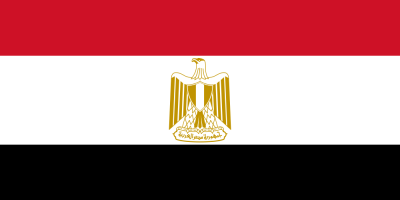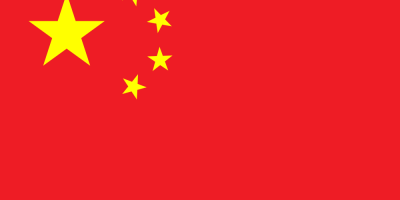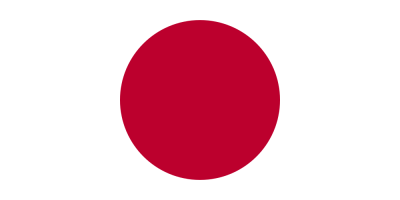Taiwan flag color codes incorporates a powerful palette that encapsulates the spirit of this East Asian island. With its red field and dark blue canton, the iconic design is recognized around the world as the banner of Taiwan. If you want to accurately display these meaningful colors in your projects, knowing the proper color codes is key. This article will provide the HTML HEX, RGB, PANTONE, HSL, CMYK, HWB and NCOL values for the Taiwan flag colors so you can faithfully reproduce this important flag. With the comprehensive Taiwan flag color codes, you’ll have everything you need to integrate Taiwan’s national colors into your website, design or artwork. Display the red and blue hues with confidence using the authoritative color codes for the Taiwan flag.
Table of Contents
What are the colors of Taiwan flag?
The Taiwan flag consists of three main colors:
- Red – The main background field is red. This represents the bloodshed during the revolution against the Qing dynasty and symbolizes liberty, fraternity, and patriotism.
- Dark Blue – The canton (top left rectangle) is dark blue. This represents the sky, white sun, and 12 rays of the sun symbolizing the months and traditional Chinese hours.
- White – The twelve rays of the white sun in the dark blue canton are white. This represents brightness.
So in summary, the key colors are:
- Red field
- Dark blue canton
- White sun rays
The powerful red invokes the bloodshed during revolution against China. The dark blue depicts freedom and nationalism. And the white sun represents vibrancy and enlightenment. Together they create a symbolic flag for Taiwan.
Taiwan flag color codes & Color Names:
BLUE
| Color Model | Value |
|---|---|
| HTML | #0033A0 |
| HEX | 0033A0 |
| RGB | 0, 51, 160 |
| PANTONE | Reflex Blue C |
| HSL | 215°, 100%, 31% |
| CMYK | 100%, 68%, 0%, 37% |
| HWB | 215°, 0%, 37% |
| NCOL | N/A |
WHITE
| Color Model | Value |
|---|---|
| HTML | #FFFFFF |
| HEX | FFFFFF |
| RGB | 255, 255, 255 |
| PANTONE | White |
| HSL | 0°, 0%, 100% |
| CMYK | 0%, 0%, 0%, 0% |
| HWB | 0°, 0%, 0% |
| NCOL | N/A |
RED
| Color Model | Value |
|---|---|
| HTML | #B20A2C |
| HEX | B20A2C |
| RGB | 178, 10, 44 |
| PANTONE | 186 C |
| HSL | 345°, 89%, 36% |
| CMYK | 0%, 95%, 75%, 30% |
| HWB | 345°, 0%, 30% |
| NCOL | N/A |
What is the meaning of colors in the Taiwan flag?
The colors of the Taiwan flag represent the following symbolic meanings:
- Red – The red field represents courage, sacrifice, and the bloodshed when revolutionaries clashed with the Qing dynasty. It invokes the strife and losses endured in order to gain independence.
- Dark Blue – The dark blue rectangle in the corner symbolizes liberty, democracy, and nationalism. It depicts the self-governance and freedom that Taiwan now enjoys.
- White – The white rays of the sun signify vibrancy, brightness, and enlightenment. They represent the progress Taiwan has made and the nation moving toward a bright future.
In summary:
- Red recalls the bloodshed and courage of revolution.
- Dark blue signifies freedom and self-governance.
- White depicts a vibrant, enlightened future for Taiwan.
The colors come together to create a flag that resonates with Taiwan’s history of revolution, independence, and national spirit. The meaningful symbolism has established it as an iconic banner for the country.
Explore More Flag Colors:
FAQs: Frequently Asked Questions:
Is Taiwan a fully independent country?
The status of Taiwan is a complex and sensitive issue in international relations. Taiwan considers itself a sovereign and independent country officially known as the Republic of China (ROC). However, the People’s Republic of China (PRC), which is the government of mainland China, claims sovereignty over Taiwan and views it as a part of its territory.
Is Taiwan a part of China before?
aiwan has been inhabited by various indigenous peoples. In the 17th century, the island became a significant outpost for European colonial powers, particularly the Dutch and Spanish. However, the Ming and Qing dynasties of China claimed sovereignty over Taiwan in the 17th century.
During the First Sino-Japanese War (1894-1895), the Qing Dynasty ceded Taiwan to Japan in the Treaty of Shimonoseki. Taiwan was under Japanese rule from 1895 to 1945. After Japan’s defeat in World War II, the Republic of China (ROC), led by the Chinese Nationalist Party (Kuomintang or KMT), took control of Taiwan.
Why is Taiwan split from China?
The split between Taiwan and mainland China has its roots in historical, political, and military events. Here are key factors that contributed to the separation:
Chinese Civil War (1927-1950): The Chinese Civil War was fought between the Chinese Nationalist Party (Kuomintang or KMT) and the Chinese Communist Party (CPC). The conflict began in 1927 and was temporarily interrupted during World War II when both sides focused on resisting Japanese aggression. However, hostilities resumed after the war.
Japanese Rule of Taiwan (1895-1945): Taiwan was ceded to Japan in 1895 after the First Sino-Japanese War. It remained under Japanese rule until the end of World War II in 1945 when Japan surrendered, and Taiwan was placed under the administrative control of the Republic of China (ROC).
Chinese Nationalist Retreat to Taiwan (1949): As the Chinese Communist Party (CPC) led by Mao Zedong gained control of mainland China, the Chinese Nationalist Party (KMT) under Chiang Kai-shek retreated to Taiwan. The KMT government continued to claim sovereignty over all of China, including the mainland, while governing Taiwan.
Declaration of the People’s Republic of China (PRC): In 1949, the CPC declared the establishment of the People’s Republic of China (PRC) on the mainland. This marked the beginning of the PRC as a separate government from the ROC.
De Facto Independence: Over time, Taiwan developed its own political, economic, and social systems. The ROC government, although continuing to officially claim sovereignty over all of China, effectively operated as a separate and self-governing entity on the island.
When was Taiwan removed from China?
Taiwan has not been officially removed from China, and the political status of Taiwan remains a complex and disputed issue. The People’s Republic of China (PRC) claims sovereignty over Taiwan, considering it an integral part of its territory. On the other hand, the Republic of China (ROC) government, which retreated to Taiwan in 1949 after losing the Chinese Civil War to the Chinese Communist Party (CPC), maintains its claim over the entire territory of China, including the mainland.
Does China see Taiwan as independent?
No, the People’s Republic of China (PRC) does not view Taiwan as an independent country. The PRC claims sovereignty over Taiwan, considering it an integral part of its territory. From the perspective of the Chinese government, Taiwan is viewed as a province of China that must eventually be reunified with the mainland, and the PRC asserts the “One-China” principle.
Who recognizes Taiwan as a country?
The countries that officially recognize Taiwan tend to have smaller or less influential diplomatic ties. Some of the countries that historically recognized Taiwan include:
Eswatini (formerly Swaziland): Eswatini has maintained diplomatic relations with Taiwan, recognizing it as the Republic of China (ROC). As of my last update, Eswatini was one of the few African countries with such recognition.
Vatican City: The Holy See (Vatican City) has had historical ties with Taiwan, and both entities had diplomatic relations. However, these relations have sometimes been subject to changes and negotiations.
Honduras, Guatemala, Nicaragua, and Paraguay: These countries have had periods of diplomatic recognition of Taiwan in the past. However, diplomatic relations can be subject to change, and some countries may switch their recognition based on geopolitical considerations.
Does Taiwan pay China taxes?
No, Taiwan does not pay taxes to the People’s Republic of China (PRC). Taiwan operates as a separate and self-governing entity with its own government, taxation system, and fiscal policies. The Republic of China (ROC) government governs Taiwan and administers its own tax collection and financial systems independently.
What is the currency of Taiwan?
The official currency of Taiwan is the New Taiwan Dollar, abbreviated as NTD or TWD. The symbol commonly used for the New Taiwan Dollar is “$” or “NT$”. The New Taiwan Dollar is issued and regulated by the Central Bank of the Republic of China (Taiwan).
Why is Taiwan important to the US?
Taiwan is considered strategically important to the United States for several reasons:
Regional Stability: The stability of the Taiwan Strait and the broader East Asia region is crucial for regional peace and security. The U.S. has an interest in maintaining stability and preventing conflict, and the status of Taiwan is a key factor in the overall regional balance.
Security Alliance: The U.S. and Taiwan share a history of cooperation in security and defense matters. The Taiwan Relations Act, enacted by the U.S. Congress in 1979, commits the U.S. to providing Taiwan with arms of a defensive character and maintaining the capacity to resist any resort to force or other forms of coercion.
Economic and Trade Ties: Taiwan is an important economic partner for the U.S. The two economies have substantial trade and investment ties. The U.S. has an interest in fostering economic stability and growth in the region, and Taiwan plays a role in that dynamic.
Democratic Values: Taiwan is a vibrant democracy with a commitment to democratic values and human rights. The U.S. shares these values and has a strategic interest in supporting and promoting democracy in the Asia-Pacific region.
Countering Authoritarian Influence: The U.S. views Taiwan as a democratic and free-market model that stands in contrast to authoritarian systems. Supporting Taiwan helps counterbalance the influence of non-democratic regimes in the region.
Global Technology Supply Chain: Taiwan is a major player in the global technology supply chain, particularly in the semiconductor industry. As the U.S. seeks to maintain technological leadership, cooperation with Taiwan in areas such as technology and innovation becomes increasingly important.













